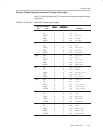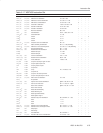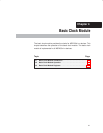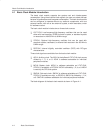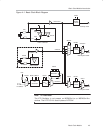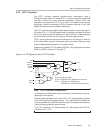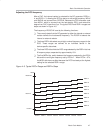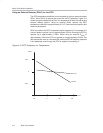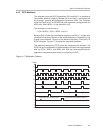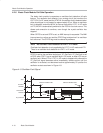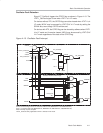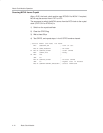
Basic Clock Module Operation
4-5
Basic Clock Module
4.2.2 LFXT1 Oscillator
The LFXT1 oscillator supports ultralow-current consumption using a
32,768-Hz watch crystal in LF mode (XTS = 0). A watch crystal connects to XIN
and XOUT without any other external components. Internal 12-pF load
capacitors are provided for LFXT1 in LF mode. The capacitors add serially,
providing a match for standard 32,768-Hz crystals requiring a 6-pF load.
Additional capacitors can be added if necessary.
The LFXT1 oscillator also supports high-speed crystals or resonators when in
HF mode (XTS = 1). The high-speed crystal or resonator connects to XIN and
XOUT and requires external capacitors on both terminals. These capacitors
should be sized according to the crystal or resonator specifications.
LFXT1 may be used with an external clock signal on the XIN pin in either LF
or HF mode. When used with an external signal, the external frequency must
meet the datasheet parameters for the chosen mode.
Software can disable LFXT1 by setting OSCOFF, if this signal does not source
SMCLK or MCLK, as shown in Figure 4−2.
Figure 4−2. Off Signals for the LFXT1 Oscillator
XT2
XTS
OSCOFF
CPUOFF
SELM0
SELM1
SCG1
SELS
XT2 is an Internal Signal
XT2 = 0: MSP430x11xx, MSP430x12xx devices
XT2 = 1: MSP430x13x, MSP430x14x
MSP430x15x, and MSP430x16x devices
LFoff
XT1off
Note: LFXT1 Oscillator Characteristics
Low-frequency crystals often require hundreds of milliseconds to start up,
depending on the crystal.
Ultralow-power oscillators such as the LFXT1 in LF mode should be guarded
from noise coupling from other sources. The crystal should be placed as
close as possible to the MSP430 with the crystal housing grounded and the
crystal traces guarded with ground traces.
The LFXT1 oscillator in LF mode requires a 5.1-MΩ resistor from XOUT to
V
SS
when V
CC
< 2.5 V.



